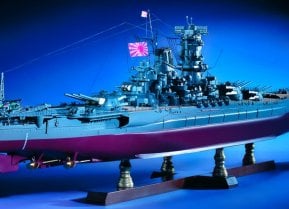MiG-29K: Russia's Deadly Aircraft Carrier Warplane
The MiG-29K, a variant of the renowned MiG-29 Fulcrum, is a versatile naval fighter jet designed for carrier operations. Featuring a strengthened structure, folding wings, and enhanced undercarriage, it is equipped for the rigors of deck-based launching and recovery.
Summary: The MiG-29K, a variant of the renowned MiG-29 Fulcrum, is a versatile naval fighter jet designed for carrier operations. Featuring a strengthened structure, folding wings, and enhanced undercarriage, it is equipped for the rigors of deck-based launching and recovery. With capabilities for carrying a broad array of munitions and a 30mm cannon, the MiG-29K offers considerable firepower. Despite its advanced features, including radar-absorbing coatings and electronic warfare systems, the Russian and Indian naval fleets face operational challenges due to the absence of the Admiral Kuznetsov aircraft carrier. This limitation has redirected MiG-29K and Su-33 operations to land-based missions in Ukraine.
MiG-29K: Russia's Naval Powerhouse Faces Carrier Challenges
When it comes to Russian combat aircraft, there are two major families: Sukhoi and Mikoyan. Since World War Two, these two aerospace defense giants have been vying for power and influence within the Russian military industry. The result of this intense competition is some great combat aircraft.
The MiG-29 Fulcrum fighter jet is one of them. This is a versatile aircraft with many different versions. Perhaps one of the most interesting iterations of the MiG-29 is the “K.”
A Naval Interceptor
The MiG-29K is a twin-engine, single-seat, multi-role naval fighter jet. The “K” designation stands for “Korabelnogo Bazirovaniya,” or deck-based, and highlights the naval role of the aircraft.
Designed for carrier operations, the MiG-29K comes with a strengthened undercarriage and a more robust structure so it can withstand the amazing forces that come with the mission set. Launching and recovering an aircraft in a much more limited space would usually mean that the airframe takes a lot of abuse. In addition, the MiG-29K has folding wings so that it can fit in the special elevators used in aircraft carriers to bring fighter jets on the deck.
When it comes to weapon systems, the MiG-29K can carry a wide range of air-to-air and air-to-ground munitions, including R-73 heat-seeking air-to-air missiles and R-27 radar-homing air-to-air missiles, as well as cruise missiles, glide bombs, rockets, and conventional bombs. It also packs a powerful 30mm Gryazev-Shipunov GSh-30-1 cannon for dogfights.
The aircraft’s engines can produce approximately 37,000 lbs of thrust. The MiG-29K can reach speeds of up to 1,500 miles and has an operational range of approximately 950 miles. As far as operating altitude, the MiG-29 can fight well up to 59,000 feet.
In addition, the naval fighter jet sports radar-absorbing coating and electronic warfare capabilities are designed to reduce its radar signature and make it more survivable in a 5th-generation battlefield.
There are several versions of the MiG-29K in use by the Russian and Indian militaries. In essence, however, it is the same aircraft with small differences (the largest difference is the twin-seat version of the aircraft).
Today, the fleet of MiG-29K fighter jets shares a similar situation as the Su-33 Flankers: the lack of progress on the Admiral Kuznetsov means that Russia’s carrier fighter jets don’t have a carrier to operate from. As a result, MiG-29K fulcrums and Su-33 Flankers fly combat sorties from land air bases against targets in Ukraine and take a steady amount of casualties from Ukrainian air defense systems.
Despite the casualties over Ukraine, Russian MiG-29K and Su-33 pilots probably feel a relief that they aren’t operating from the Kremlin’s sole aircraft carrier. You see, in one of the Admiral Kuznetsov’s last cruises, two aircraft were destroyed just days apart. In the first instance, a MiG-29K lost power while landing and crashed, while a few days later, a Su-33 crashed after the arresting cable on the carrier’s deck, which is designed to stop an aircraft, snapped, sending the aircraft into the water.
About the Author
Stavros Atlamazoglou is a seasoned defense journalist specializing in special operations and a Hellenic Army veteran (national service with the 575th Marine Battalion and Army HQ). He holds a BA from Johns Hopkins University and an MA from the Johns Hopkins School of Advanced International Studies (SAIS). His work has been featured in Business Insider, Sandboxx, and SOFREP. Email the author: [email protected].


